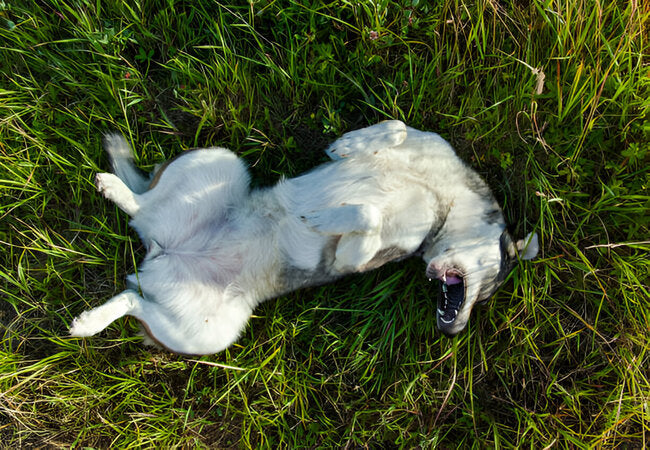Why Dogs Roll in Dead Animals in 2025 – Vet‑Approved Guide to Instinct, Risks & Solutions 🐶💀

In this article
Why Dogs Roll in Dead Animals in 2025 – Vet‑Approved Guide to Instinct, Risks & Solutions 🐶💀
By Dr. Duncan Houston BVSc
Most dog owners have endured the heart-sink moment: your happy pup returns smelling like death after rolling in a carcass. 😱 Before you scold, know this—this behavior is deeply instinctual. In this 2025 vet-approved deep dive, we explore why dogs do it, when it becomes dangerous, and practical ways to manage it—it-all with warmth, science, and a sprinkle of humor.
1. 🧬 Ancestral Instincts: Scent-Masking & Stalking
Dogs’ wild ancestors—wolves, coyotes—scent-roll to mask their odor with strong smells like carrion, helping them sneak up on prey. This behavior, called “self-anointing,” persists in domestic dogs even though their food comes in bowls.
- Scent-masking: Disguising their natural smell helps them blend into the environment while hunting.
- Scent-sharing: Bringing back the smell alerts other dogs that something is interesting to investigate.
2. 📣 Social Communication & Territory Claiming
Rolling in a carcass can be a way for dogs to communicate location-based information. Other dogs sniff the scent and follow it back, like an olfactory bulletin board.
- Information-sharing: “I found something here” is conveyed through scent layers.
- Claiming territory: Mixing their own scent with another powerful odor communicates ownership.
3. 😋 The Pleasure Factor: Canine “Eau de Dead”
To humans, rotten smells are repulsive, but dogs may find them intriguing or even pleasant at a sensory level—similar to how we enjoy perfumes. It triggers dopamine and satisfies curiosity.
4. ⚠️ Health Risks & Safety Considerations
While instinctual, rolling in dead animals can come with hazards:
- Bacterial exposure: Carrion can harbor Clostridium botulinum, salmonella, leptospira.
Parasites:
- Fleas, ticks, worms—or rabid wildlife—may be present.
- Skin irritation: Decomposing tissue and maggots can cause dermatitis.
If your dog shows vomiting, diarrhea, lethargy, or strange symptoms after this behavior, a vet check is smart.
5. 📋 When Does It Become a Problem?
Not all rolling is harmful—but persistent or injurious behavior may indicate deeper issues:
- Frequent rolling, even without carcasses
- Skin irritation, wounds, or infections developing afterward
- Obsession—switching away from normal activities to roll repeatedly
This may signal compulsive tendencies or signaling underlying stress or anxiety.
6. ✅ Preventive & Management Strategies
A. Strong Recall & “Leave It” Training
- Teach a reliable recall cue and leave-it command using positive reinforcement.
- Start at home, progress to yard and park levels.
“When you see your dog sniffing intensely, step in, cue ‘leave it’, and redirect their attention—then reward alternate behavior like a sniff mat or toy.”
B. Leash Control & Environmental Management
- Use a long leash or keep close when walking in high-risk areas (woods, fields).
- Scout and avoid zones with obvious roadkill or carcass remains.
- Install secure fencing if your yard frequently exposes your dog to wildlife.
C. Redirect to Safe Alternatives
- Offer scent-rich but clean alternatives like toys with essential oil dilution or safe herbal bundles.
- Use food puzzles and scent games to satisfy their need for olfactory stimulation.
D. Bathe & Clean Promptly
- Use enzymatic washes and warm water to remove odors thoroughly.
- Check for wounds, maggots, fleas immediately post-incident.
E. Enrichment & Behavior Adjustment
- Increase exercise—both physical and mental—to reduce boredom.
- Train tricks, introduce puzzle feeders, and dedicate time daily to bonding activities.
7. 🧠 App Integration: Ask A Vet Help 2025
With the Ask A Vet app, you can:
- 📹 Upload videos of the behavior for expert analysis
- 🧩 Receive personalized programs including recall training, behavior shaping, and vet checklists
- 💬 Chat live with vets or behaviorists to refine your approach
8. 🧾 Quick Reference Table
| Reason | Signs | Action |
|---|---|---|
| Scent-masking | Exploratory sniff-n-roll | Redirect & reward alternative scent activity |
| Info-sharing | Return dripping with carcass smell | Train recall, avoid those areas |
| Enjoyment | Tail wagging, playful rolling | Redirect to clean scent enrichment |
| Obsession/compulsion | Repeated rolling, fixation | Vet or behaviorist consult |
9. ❤️ Final Thoughts
While gross to us, rolling in dead animals taps into a deep-rooted canine instinct—masking scent, sharing info, claiming territory, or simply indulging a thrill. Most dogs will manage just fine with a tidy wipe-down and gentle training. But if it becomes frequent, harmful, or obsessive, it's essential to step in. With understanding, proactive training, and App-based vet support, you can reduce the behavior and boost your bond—without scrubbing out the joy of being a dog. 🐶💀
Need expert guidance? Visit AskAVet.com or download the Ask A Vet app for tailored training plans, health checks, and behavior solutions!






